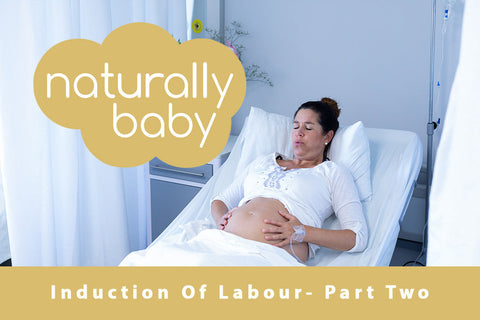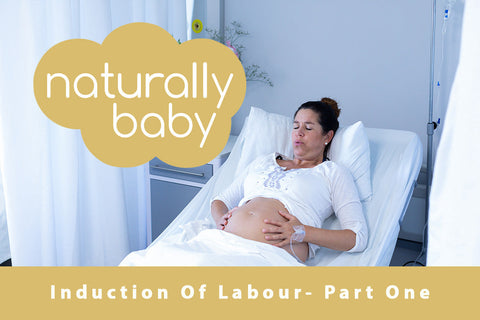So, your due date is here (or maybe even a little past), and you’re looking at the possibility of an induction. Before jumping into the official process, you might be wondering: is there anything I can do to help labour start naturally? The good news is yes, there are a few things you can try!
Can You Encourage Labour to Start Naturally?
Labour is all about hormones and especially oxytocin, often called the "love hormone." It plays a huge role in getting labour started and keeping it going. So, boosting your oxytocin levels naturally might just help things along.
How do you do that? By doing things that make you feel good and relaxed. Here are a few suggestions:
- Enjoy your favourite meal (just be mindful of what's safe in pregnancy!)
- Watch a film you love
- Listen to music that makes you happy
- Spend quality time with your partner, feeling loved and secure really does help!
Other things people try, while not strongly supported by scientific evidence are considered safe and might help:
- Raspberry Leaf Tea (from around 36 weeks) : believed to tone the uterus and soften the cervix.
- Sex : orgasm releases oxytocin, and semen contains a hormone similar to the synthetic one used to induce labour.
- Brisk walking : may help get things moving.
- Certain foods : like fresh pineapple or dates. Just steer clear of anything that causes stomach upset or dehydration. Spicy foods and castor oil are generally not recommended anymore.
What is a Stretch and Sweep?
Often offered from around 38–40 weeks (especially in low-risk pregnancies), a stretch and sweep may help nudge things along before medical induction is needed.
What happens?
Your midwife or doctor will perform a vaginal examination, gently stretching the cervix and sweeping the membranes. This helps release natural prostaglandins that can encourage labour to begin.
It can be uncomfortable and may cause cramping or light spotting, but it shouldn’t cause heavy bleeding.
Does it work?
According to research by Finucane et al. (2020):
- 60% of women went into labour spontaneously without a sweep.
- 72% of women went into labour spontaneously with a sweep.
- Labour was induced in 30% of women without a sweep, compared to 22% with one.
The Official Induction Process
If labour hasn’t started naturally, and your medical team decides induction is needed, they’ll begin by assessing how soft and open your cervix is with a vaginal examination. This helps determine the best method to begin induction.
Common Induction Methods
1. Vaginal Pessary (Propess):
A slow-release hormone tablet placed behind the cervix to help soften and open it. It stays in for up to 24 hours. If labour doesn’t start, a second pessary might be offered.
2. Non-Hormonal Dilator Rods (Dilapan):
Small rods placed in the cervix that absorb moisture and gently expand, encouraging dilation over 24 hours.
3. Cervical Balloon:
A small catheter is inserted into the cervix, and a balloon is inflated to put pressure on the cervix, helping it dilate and prompting natural hormone release.
Depending on your situation, it may be possible to return home with Dilapan or a balloon in place while awaiting labour.
4. Artificial Rupture of Membranes (ARM):
Also known as “breaking the waters,” this may be offered once the cervix is open enough, to give labour an extra boost.
5. Oxytocin Drip (Syntocinon):
If your waters have broken but contractions haven’t started, a synthetic hormone drip may be used to stimulate labour. The dose is carefully controlled and gradually increased. You'll be continuously monitored to ensure baby is coping well.
Where Will Induction Happen?
At Warwick Hospital, all inductions begin on Swan Ward. If your pregnancy has been low-risk and induction is only due to being overdue, you may still be able to give birth in the Bluebell Birth Centre.
What About Monitoring?
Induced labour usually means closer monitoring—for both you and baby. This might require being on the labour ward, where continuous electronic monitoring is available. But this doesn’t mean you’re stuck in bed!
Wireless monitors may be used even in the birthing pool, and you’ll be encouraged to:
- Move around
- Change positions
- Use a birthing ball
Staying upright and mobile can help baby get into a good position and keep contractions regular.
If Induction Doesn’t Work
Sometimes, despite everyone’s best efforts, induction may not be successful. If this happens, your medical team will talk to you about the next steps—which may include a caesarean section to safely deliver your baby.
Remember: Everyone's journey into labour is different. Whatever path your labour takes, you are supported every step of the way.
If you have any questions about induction, speak to your midwife or obstetric team—they’re there to help you feel confident and informed.












